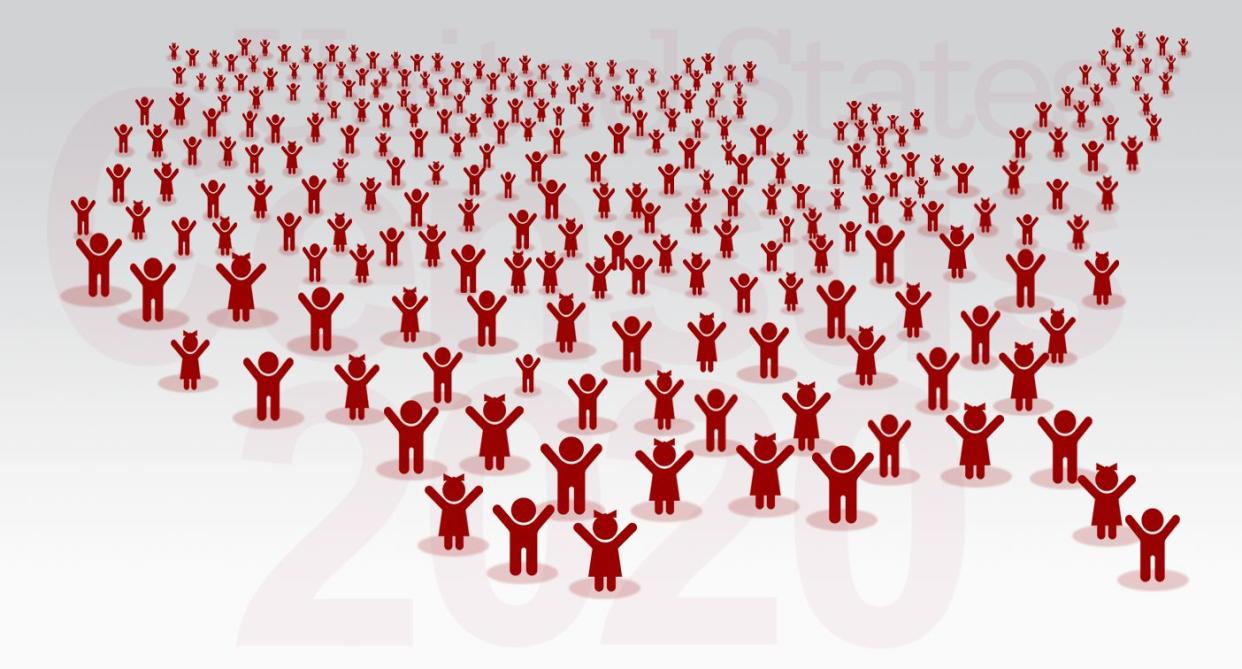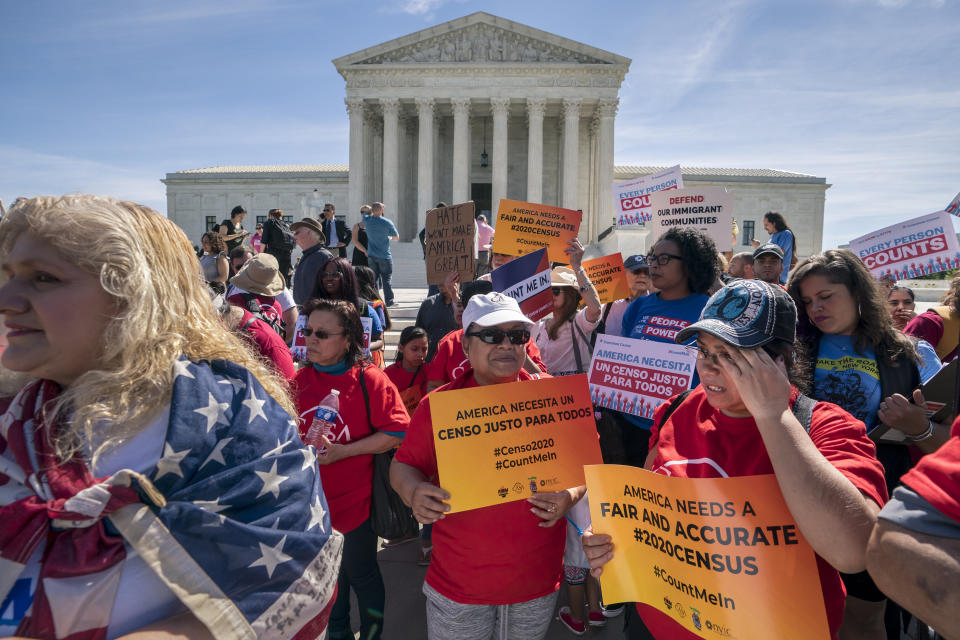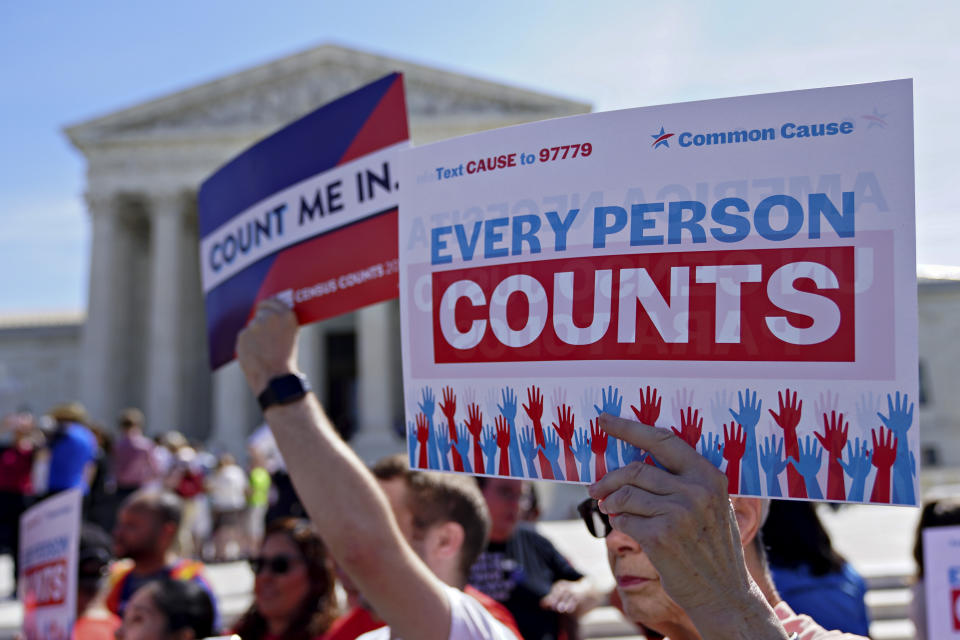Uncounted: How the census loses track of millions of children

The Supreme Court is expected to rule this month on whether respondents to the 2020 census can be asked if those in their households are citizens. But while the citizenship question has been the most visible census-related controversy, it has not been the only one. Another, less publicized but similarly consequential debate, is why the census manages to lose millions of children every decade, and what can be done to fix that.
There were 2.2 million missing from the 2010 count, or one in every 10 children ages 0 to 4, according to the Census Bureau’s own estimates. The lost children result in lost dollars for themselves and their neighbors. That’s because census numbers are not only used to determined representation in Congress, but also to determine funding levels for more than 300 federal programs, everything from the social safety net to municipal infrastructure.
Deb Stein runs the Count All Kids Committee, a partnership of advocacy groups, including Partnership for America’s Children and Zero to Three. She estimates that the 2010 miscount of children resulted in a loss of half a billion dollars in allocations to Medicaid, Community Housing Improvement Program, foster care, adoption assistance and childcare combined. “The undercount has very important practical consequences,” she said.
The last census was not the first one in which children were undercounted, experts say. “It’s a problem that has been growing since 1980,” says William O’Hare, who ran the Kids Count project at the Annie E. Casey Foundation and is the author of “The Undercount of Young Children in the U.S. Decennial Census.” “It’s just in the past few years, though, that demographers have begun to pay attention and figure out why.”
Thus far there are more questions — and theories — than answers as to why a far higher percentage of children (and an even higher percentage of Hispanic and African-American children) are omitted from census counts compared with other age groups.
It is known that younger adults are less likely to complete and return a census form than older adults, and since young children are more likely to be living with younger parents, that might explain some of the undercount. Similarly, young families are more likely to move often, be less educated, rent instead of own their homes and have lower incomes than older families, all of which correlate with lower response rates to the census.
This does not explain, however, why 75 to 80 percent of the children who are missed live in households that do return the questionnaire. “Whereas adults are missed because they don’t return the form, children are missed because they are left off forms that are returned,” Stein says. And the “why” of that is still a matter of speculation. Demographers doubt that parents are simply forgetting the existence of their youngest child, and suspect instead that it is a result of a misunderstanding or miscommunication by the one person in the household who fills out each form as to who is to be counted.
“We have some anecdotal clues about why young children are left off,” says Margo Anderson, emeritus professor at the University of Wisconsin and author of “The American Census: A Social History” and an editor of the “Encyclopedia of the U.S. Census.”

Those include: complex households, where many families of multiple generations live together; temporary households, such as homeless parents and children living with relatives or friends; crowded households, where — despite Census Bureau guarantees that identifying data will not be made public for 70 years, residents might fear the landlord would object to the number of occupants; new immigrant households who, again, despite the bureau’s policies to the contrary, fear that children might be taken away.
“Bottom line, we don’t know why,” Stein says. “And it’s crucial that we figure it out.”
Another unknown is the effect of a citizenship question, if the Supreme Court allows it to be included in next year’s questionnaire. It is being challenged by 18 states and six cities, and documents that surfaced in the last week showed that the proposal had been advanced by a Republican consultant who believed it would weight the census results in favor of Republican-leaning neighborhoods. Child advocates have expressed concern that adding a citizenship question would scare off respondents whose households include undocumented (or even legal) immigrants. This could result in missing even children who are U.S. citizens but whose parents are not. “If the citizenship question is on the form, that will make the undercount of young children worse,” Stein says. “There are almost 2 million children in the U.S. living with at least one undocumented relative.”
Article 1, Section 2 of the Constitution requires a decennial count of the population of the United States, and when James Madison first formulated that plan, its goal was simply to keep track of who lived where in a rapidly growing nation, allocating seats in the House of Representatives according to population. It is still used for that purpose, but over time, other uses for the data have been added, and the list of questions has grown.
“Having decided ‘We the People,’ then the question is ‘Who are the people?’” Anderson says.
For nearly 150 years, the count was taken by physically sending a census worker to every household in the country and asking a series of questions, entering the answers by hand. By 1930, the questionnaire included 40 questions, but the once-a-decade pace left President Herbert Hoover unsatisfied because it didn’t provide up-to-date economic statistics, including the unemployment rate. That led the Census Bureau to experiment with statistical sampling, a relatively new science at the time.
During the 1940s and 50s statistical techniques improved, and in 1960 — the first Census done by mail rather than in person — the long form was introduced. Rather than ask the full set of questions of everyone, one in four households (later reduced to 1 in 6) was sent a detailed version while the population in general answered a more limited list. Soon afterward, the American Community Survey was established, “essentially a continuous long form,” says Andrew Reamer, a professor at George Washington University and an expert on the census. The resulting stream of data has become “the foundation not for American democracy but also the plumbing or electrical grid for the economy, for nonprofit and government services. The list is endless,” he says.
Starting in the 1980s, the census bureau began to use these same kinds of analysis to determine whether its own numbers were accurate. Before then it was assumed the counts were not exact, Anderson says, “but now we can actually measure the inaccuracy, which wasn’t really possible until 50, 60 years ago.”

This involved a physical recheck (picking a sample set of census tracts around the country and sending a phalanx of census takers into those neighborhoods to confirm the response forms) and a statistical one (comparing the results from returned forms with similar counts by local municipal entities.)
After the 1980 census, for instance, the reanalysis determined that one in 20 African-Americans were not counted. When preparing for the 2000 census, the Clinton administration proposed allowing a statistical adjustment of the numbers to correct for the undercounts. Republicans in Congress objected and eventually the Supreme Court ruled that the official tally must be based only on actual counts, not statistical projections.
Experts stress that undercounting is not the only known glitch in census numbers. There are also overcounts. It is believed that in 2010, 1 million children were counted twice. This would make the actual undercount closer to 1 million, “still a huge number, and still representing a lot of funding” Stein says.
Overcounts most often occur because families have more than one home, or because parents count children away at college who are also counted in their dorms. These double counts are most likely to be of children who are wealthy and white, portraying the child population as even more affluent and Caucasian than it actually is.
Groups representing those who stand to lose most from an undercount of children have been warning of the problem for nearly a decade. They had some success, including changes in the actual language on the form so that instead of asking for a list of all household residents, it specifies “adults, children and babies.” And before signing off from the form, which can be submitted electronically this year, respondents are reminded to include both babies and foster children.
But, says Stein, these changes assume that children are omitted because they are forgotten, and that may not be accurate. More research is needed, she says, on the reasons why children have been historically undercounted so those obstacles can be addressed,
“They did 42 focus groups,” she says of the bureau, “with all sorts of hard to count groups, not one of them was families with young children. Then they did an online survey of 17,000 respondents, and they did ask who had young children, but none of the questions were to help identify why people leave young children off.”

In response, child advocacy groups organized, forming such entities as Count All Kids and lobbied the bureau for more attention. In November, the bureau responded, creating an Undercount of Young Children Task Force to work with stakeholder groups.
“I give them credit for the changes that happened since then,” Stein says.
O’Hare agrees. “I like what they are coming up with now,” he says, but adds, “I say that with some frustration that it wasn’t done a year or two ago.” It is too late, for instance, for testing the efficacy and accuracy of different wording of questions. “With more time, we could have tested the messaging, trying to understand what you could say to a respondent that would make it more likely to include young children in their survey response.”
As a result, much of the work done over the past six months has been more intuition than science, as groups like Stein’s prepare mailings and messaging. Preliminary focus groups are finding that what resonates most with high-risk families is that there is money on the line.
More traditional messaging tends to be “about the allocation of congressional seats, and the civic duty, and all that’s true,” O’Hare says. “But you get people’s attention when you talk about the money.”
Adds Stein: “What is most helpful is talking about the way that this data is needed to make sure communities get enough funding for things like health care, childcare, housing, transportation.”
Her group plans to enlist childcare centers, pediatrician’s offices, religious centers and other organizations that work with young families to spread the word. The actual administration of the census takes place between March and May of next year, which means, she says, “we’re obviously racing the clock.”
_____
Read more from Yahoo News:
Behind the scenes, candidates vie for Hollywood cash while keeping populist cred
Can Lower Manhattan survive climate change? New York's sea level rise plan faces pushback
How Sen. Mazie Hirono became Trump's toughest Democratic critic
Younger voters continued to outstrip turnout by seniors in 2018



